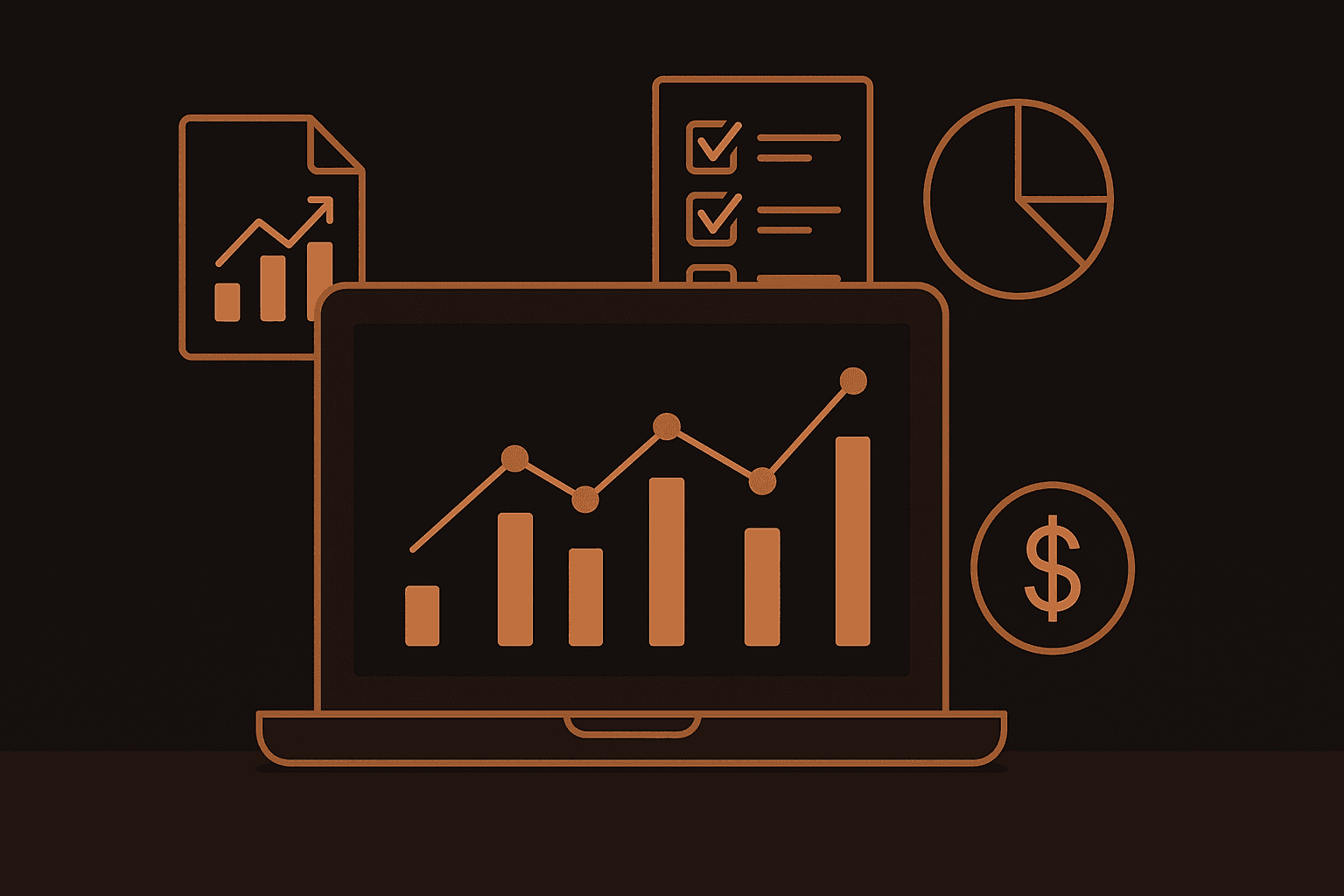Trading Journal
15 Essential Trading Metrics Every Trader Should Track

15 Essential Trading Metrics Every Trader Should Track
A trading journal is a powerful tool—but only if it captures the right data. Tracking trades without clear structure is just busywork. The key to improving your performance lies in identifying patterns, eliminating inefficiencies, and doubling down on what works. That starts by knowing which metrics matter most.
Below are 15 essential trading metrics that every serious trader should track.
1. Entry and Exit Price
Every trade starts and ends here.
These basic data points are the foundation of calculating profitability, risk, and execution quality. Without them, no performance analysis is possible. Entry and exit prices also help determine slippage, one of the hidden costs of trading.
Recording these accurately lets you analyze execution efficiency over time, especially if you're trading fast-moving markets.
2. Position Size
How much you risked is as important as the setup.
Position size directly affects risk and P&L. Traders often lose money not because of strategy, but because they over- or under-sized their positions. Tracking this ensures you follow a consistent risk management plan.
It’s essential for reviewing risk-reward consistency and emotional discipline.
3. Stop Loss and Take Profit Levels
Risk without a boundary is gambling.
These levels reflect your trade plan. Logging them lets you analyze whether your initial assumptions were realistic and if your losses are contained as intended. Over time, you can evaluate whether your take profits are too conservative—or your stops too wide.
It also helps in measuring strategy expectancy and planning improvements.
4. Win/Loss Outcome
Simple but necessary.
This binary indicator gives you your win rate over time. On its own, it's incomplete—but when combined with reward-to-risk ratio, it becomes powerful.
A low win rate can still be profitable if your reward-to-risk is skewed in your favor, and your journal helps test that balance.
5. Reward-to-Risk Ratio
Profitability is not just about being right, but being right enough.
This ratio shows how much you gained relative to what you risked. A high R:R ratio can compensate for a low win rate, and vice versa. As the Journal of Financial Markets has shown, traders with structured plans and tracked risk/reward ratios tend to outperform those who trade reactively.
This metric directly correlates to long-term expectancy.
6. Trade Duration
Time in trade impacts stress, opportunity cost, and capital efficiency.
Track how long trades remain open — minutes, hours, days. Short durations may suggest overtrading or emotional exits, while long ones can tie up capital inefficiently. Review durations alongside outcomes to see which setups deliver fastest.
It also supports strategy refinement by filtering for optimal holding periods.
7. Market Conditions
Context matters as much as strategy.
Note whether the market was trending, ranging, volatile, or news-driven. A strategy that performs well in trending markets may underperform in choppy ones. This data helps you identify environment-fit for each system.
Over time, this can guide when to be aggressive and when to sit out.
8. Setup or Strategy Type
Label your trades by the strategy used: breakout, mean reversion, news play, etc.
Tracking this allows you to compare the performance of different strategies. You may discover one setup has a much higher win rate or better expectancy in certain conditions.
This metric helps isolate and double down on your best ideas.
9. Trade Rationale
Document why you took the trade.
This is a qualitative metric but essential for accountability. Was it based on a signal? A hunch? FOMO? Your rationale reveals your mindset and can uncover psychological traps or rule violations.
It’s also useful when back-reviewing trades that looked good on paper but failed in execution.
10. Emotional State
Trading psychology matters more than most admit.
Note how you felt before, during, and after the trade — calm, anxious, overconfident, fearful. Research in behavioral finance literature suggests that emotional self-tracking helps prevent bias-driven mistakes like overtrading or revenge trading.
This builds emotional awareness and decision hygiene.
11. Slippage
Especially relevant for active traders.
Record the difference between your intended price and the actual fill. High slippage may point to poor execution, low-liquidity instruments, or issues with your broker or platform.
Reducing slippage is a hidden edge in itself.
12. Commission and Fees
Even small costs add up.
If you don’t track commissions or spreads, you’re not seeing your real performance. This is crucial for scalpers or high-frequency traders where costs can eat into profits.
Tracking fees helps assess the true profitability of each strategy.
13. Trade Category (e.g., planned vs. impulsive)
Not all trades are equal.
Categorizing trades based on whether they followed your plan (or not) adds critical insight. Many losses come from impulsive trades that weren't in the plan. Labeling them creates accountability and a chance to reduce emotional mistakes.
This alone can significantly reduce unnecessary drawdown.
14. News or Events
Was the trade affected by a macro event?
Logging major scheduled events (like earnings, FOMC meetings, CPI releases) provides context for volatility and unusual outcomes. It helps filter abnormal trades from strategic misfires.
News tracking also aids in determining whether to include or avoid trades during high-impact events.
15. Post-Trade Notes
A brief reflection post-exit solidifies learning.
Note what went well, what didn’t, and what could be improved. This builds your internal feedback loop. Over time, these notes become the raw material for improving both strategy and mindset.
Reflection closes the loop between intention and outcome.
Final Thoughts: Data-Driven Trading Starts Here
These 15 metrics provide a structured lens through which you can view your performance. They give clarity to your decisions, expose hidden flaws, and accelerate your improvement.
If you’re tracking them manually, spreadsheets can help—but they take time and are prone to error. That’s why TradeReveal automates this process, capturing every trade and computing your metrics with AI-powered accuracy.
Start your free TradeReveal account today and take the guesswork out of your trading analytics.
Happy Trading,
The TradeReveal Team